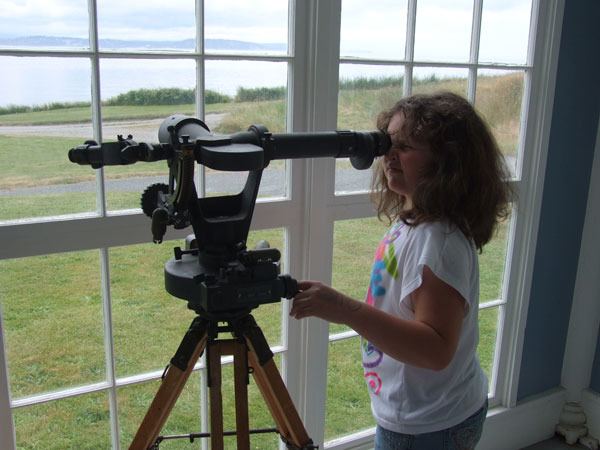There’s something mysterious about the Colonel’s House.
The three-story, colonial-style home with gothic elements sits at the highest elevation on Camp Casey with an expansive view of Puget Sound.
Used exclusively by the president and vice president of Seattle Pacific University, the public was allowed a rare look into the 100-year-old home Friday at Camp Casey’s open house.
Only the second open house organized by the conference center, visitors who don’t normally have access were allowed to wander through several of the historic buildings and use the pool for free.
“I feel like Willy Wonka,” said Robyn Myers, manager of conference services. “It’s a good chance to showcase to the community what we are doing.”
What they are doing started in 1956 when Seattle Pacific University purchased the more than 40 buildings that comprise Camp Casey. Since that time, the facility has been slowly remodeling each building aiming to maintain the historical integrity while making the space usable for the convention center.
“I think what makes us unique is we turned it into a different sort of space that can be used in many ways,” Myers said. “People can come for the pool, they can come for the open space, they can come for the green, they can come for the history.”
Despite all the progress SPU has made, including a newly renovated mess hall, there still is a long way to go, Myers said. For that reason, she said they hope to make the open house an annual event, to help raise awareness and money to continue upgrades.
“We love history, and we’re really into the old houses,” said Barb Johnston, who traveled up from Everett with her husband Chuck for the open house. As an SPU alum, Johnson has stayed in other buildings at Camp Casey, and she used to camp there as a child. “So we’ve always wanted to come inside (the Colonel’s House),” she said.
Guests were also allowed into the Sea Lab, a marine biology teaching center which is normally only available to school groups. The dozen or so aquariums in the Sea Lab are home to various types of Puget Sound sea life including starfish and sunfish, sea pickles, crab and sea urchin.
Keith Ludemann, a retired Navy jet mechanic who built the Sea Lab from the ground up, has been working there 32 years now.
“The reward is seeing these kids,” Ludemann said. “Getting them to understand that this is what’s out there.”
Camp Casey, originally known as Fort Casey, opened in 1890 by the U.S. Military. Fort Casey, along with Fort Worden in Port Townsend and Fort Flagler in Nordland, became part of the “triangle of fire” to protect the entrance to Puget Sound. Within 20 years, Fort Casey was the fourth largest military post in Washington, housing 10 officers and 428 enlisted men.
Fort Casey was decommissioned after World War II, and SPU purchased the Camp Casey portion of the property. The fort itself along with the lighthouse, batteries and surrounding costal property are owned and operated by Washington State Parks as Fort Casey.
For information about Camp Casey and Fort Casey, visit www.spu.edu/casey or www.parks.wa.gov


